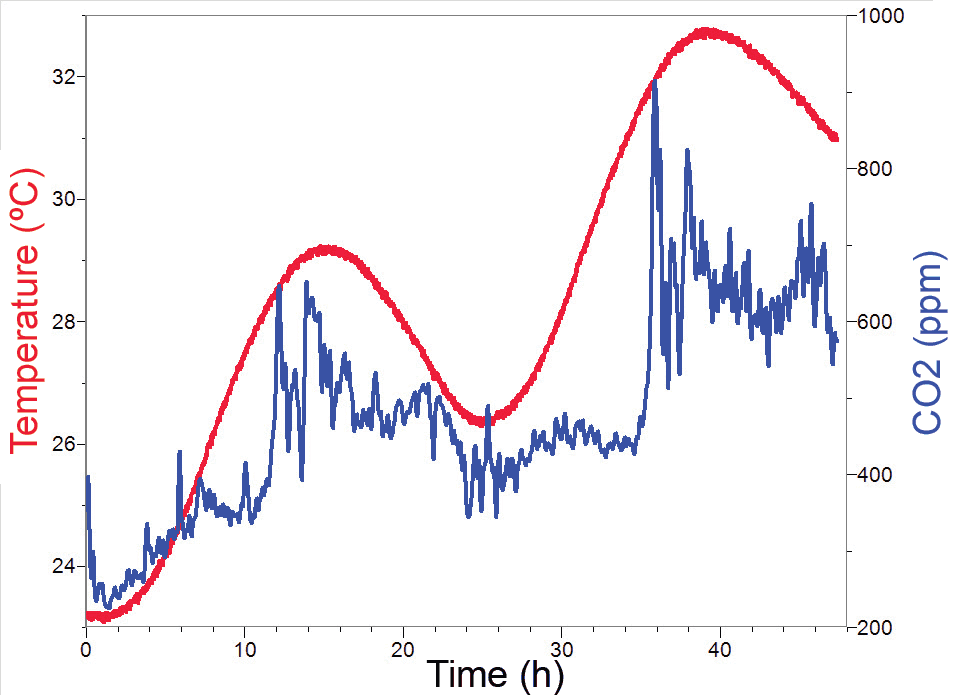Our newest environmental project at Vernier is composting with a worm bin. Our worm bin is a large, locally made, unfinished cedar chest with about 60 cubic feet of capacity. The bin is located in a shady spot on the side of our building, and contains a colony of red wiggler worms. We collect food scraps and coffee grounds, along with coffee filters, in a compost pail in our kitchen. Volunteers, called the “worm wranglers,” empty the pail into the worm bin several times a day. We also add paper towels and grass clippings to our composting worm bin. The worms turn this portion of our garbage into nutrient-rich compost that we can use on plants around our building.
Keeping a colony of red wiggler worms happily composting is not as easy as you might think. If the colony of worms gets too hot or too dry, the worms can die. For this reason, we monitor temperature and carbon dioxide production from our worm bin using a LabQuest, a Stainless Steel Temperature Probe, and a CO2 Gas Sensor. The graph below shows data taken from our worm bin over a period of 50 hours. A 6 V, 12 Ah motorcycle battery served as the power supply for the LabQuest. We monitored the temperature inside the compost heap and CO2 levels in the air in the bin during this period. You can clearly see in the graph that as temperature rises and falls, so does the level of CO2 in the bin.

If you have any questions about how to adapt your LabQuest to record continuously for more than eight hours, contact John Melville.
